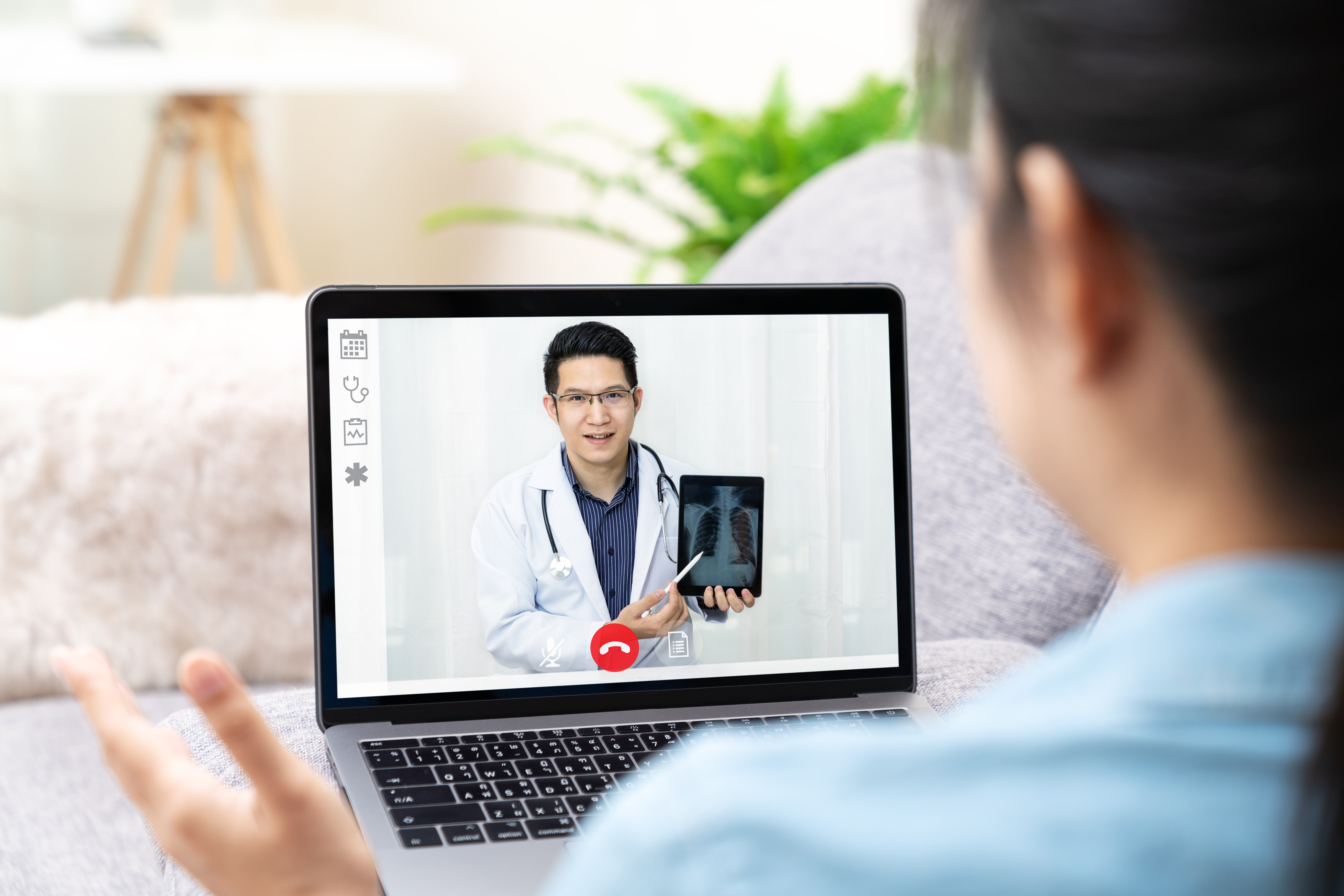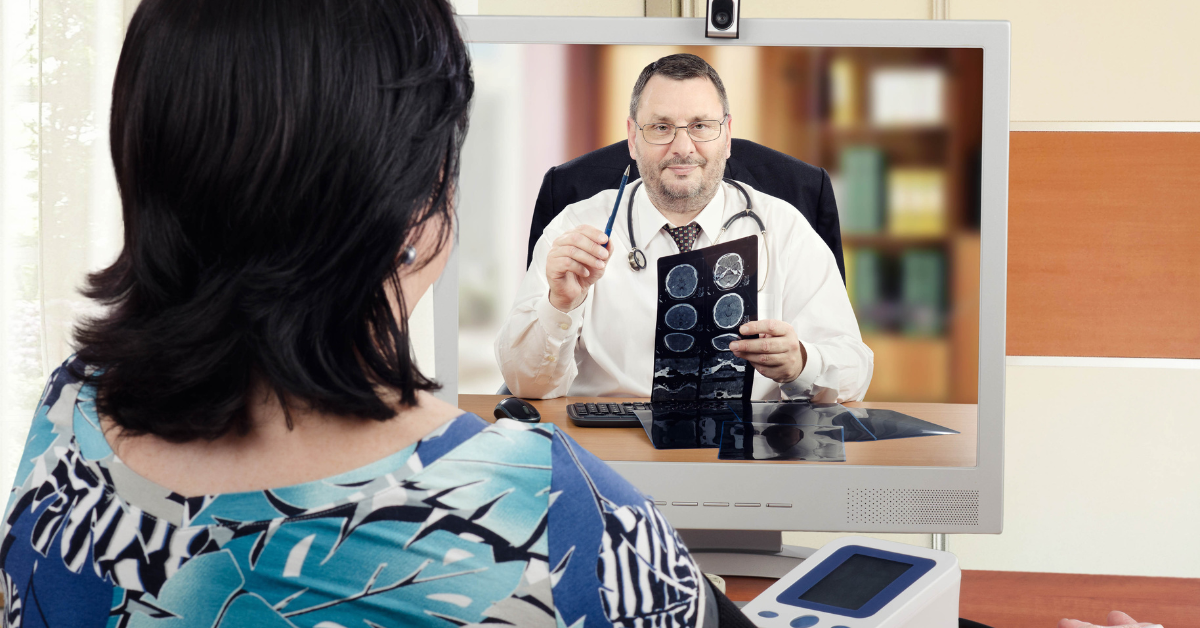During the pandemic, many hospitals leveraged telehealth to remotely monitor patients within the hospital as a way to keep patients and staff safe. This is just one example of the innovative ways providers have leveraged telehealth since its broad adoption during the pandemic.
Even though the country has reopened in terms of in-person healthcare, we should take advantage of the momentum we’ve already achieved and look for other innovative ways to use telehealth to improve patient care. One area of great opportunity is a remote patient monitoring solution (RPM).
RPM enables providers to connect with patients no matter where they or their patients are located. Video and audio technology, as well as digital health tools like smart watches, blood glucose monitors, and blood pressure cuffs, enable providers to remotely monitor a patient’s vitals in real-time. The steady stream of health data also enables providers to gain insight into trends over time and proactively intervene when issues arise.
It is estimated that 70.6 million patients in the U.S. will use RPM tools by 2025, significantly increasing the opportunity for remote patient monitoring solutions.
Following are three key areas providers should consider when implementing a remote patient monitoring solution.
Post-operative care
According to the Agency for Healthcare Research and Quality (PHRQ), nearly 20% of patients experience some type of adverse event in just the first three weeks after discharge from a hospital or emergency department, most of which are preventable. RPM can help mitigate these issues by enabling providers to continuously monitor patients during the critical period after discharge, whether the patient is at home or in another care environment.
In the case where a problematic issue is identified, providers can quickly intervene to prevent complications and readmissions, which can also help improve reimbursement while keeping patients well on the road to recovery.
Two-thirds of annual ED visits—or 18 million visits—for privately insured people in the U.S. are avoidable.
Chronic disease management
In the U.S., 73% of our total healthcare spending and 93% of Medicare spending goes toward managing chronic conditions. These conditions like diabetes, heart disease, and stroke cost the U.S. more than $650 billion each year.

As our nation ages, the incidence of chronic disease and the amount we spend on it is likely to grow. The U.S. Census Bureau reports that by the year 2030, 20% of the U.S. population will be age 65 or older. Since older individuals typically have more complex chronic conditions that require greater clinical care, leveraging RPM can help reduce costs and improve care for this often vulnerable population.
Chronic conditions, however, aren’t reserved for older adults. Sixty percent of all adults in the U.S. have at least one chronic condition and 40% have two or more. Being able to continuously monitor a patient’s condition enables providers to proactively intervene before complications can occur. This, in turn, helps reduce hospitalizations, readmissions, and ED visits. The result is more effective chronic disease management, improved outcomes and reimbursement, and an enhanced patient experience.
According to research, RPM can reduce hospitalizations by 35% and visits to the emergency department by 68% for patients with certain chronic conditions.
Rural healthcare
According to the CDC, individuals living in rural areas are at greater risk of dying from heart disease, cancer, stroke, chronic lower respiratory disease, and accidental injury than are those living in urban areas. One of the most significant issues is a lack of access to care.
Forty-six million Americans live in rural areas, and one in four say there are times when they cannot access the care they need. This is understandable since there are just 39.8 physicians for every 100,000 of these individuals.
RPM presents a clear opportunity to reach this underserved population. By removing the need for rural patients to drive long distances to urban areas to receive care, RPM can help ensure high-quality care is available when and where it’s most needed. This is especially important for high-risk cases such as pregnant mothers with conditions like gestational diabetes. RPM enables regular and continuous virtual monitoring, thereby enhancing the quality of care for both mom and baby and reducing the risk of complications before, during, and after birth.
“25% of the nation’s 1,430 rural hospitals are at risk of closing, 81% of which are considered to be “highly essential to the health and economic well-being of their communities.”
Where to begin – The Best Remote Patient Monitoring Solution
Telehealth-enabled RPM provides a great opportunity to reduce costs, improve outcomes and truly transform the patient experience. The good news is that implementing an RPM program doesn’t require a large investment in IT or additional human recourses. The key is to partner with the right remote patient monitoring solution company. VidyoHealth is that partner.
VidyoHealth is a virtual monitoring solution built for end-to-end digital healthcare delivery. Our RPM solution helps providers reach more patients across the care continuum regardless of location. Our video-enabled solution enables providers to better manage chronic disease cases, reduce avoidable readmissions in post-operative patients, and expand access to care for rural patients—all while enhancing the patient experience.
[1] https://www.insiderintelligence.com/insights/remote-patient-monitoring-industry-explained/
[2] https://psnet.ahrq.gov/primer/readmissions-and-adverse-events-after-discharge
[3] https://www.unitedhealthgroup.com/newsroom/posts/2019-07-22-high-cost-emergency-department-visits.print.html
[4] https://www.mgma.com/resources/revenue-cycle/chronic-care-management-leveraging-a-significant
[5] https://www.cdc.gov/chronicdisease/about/costs/index.htm
[6] https://www.census.gov/newsroom/press-releases/2018/cb18-41-population-projections.html
[7] https://www.census.gov/newsroom/press-releases/2018/cb18-41-population-projections.html
[8] https://www.cdc.gov/chronicdisease/about/index.htm
[9] https://www.ncbi.nlm.nih.gov/pmc/articles/PMC6834207/
[10] https://www.cdc.gov/ruralhealth/about.html
[11] https://www.cdc.gov/ruralhealth/about.html
[12] https://media.npr.org/documents/2019/may/NPR-RWJF-HARVARD_Rural_Poll_Part_2.pdf
[13] https://www.ruralhealthweb.org/about-nrha/about-rural-health-care
[14] https://www.prnewswire.com/news-releases/one-in-four-us-rural-hospitals-at-high-financial-risk-of-closing-as-patients-leave-communities-for-care-301037081.html
